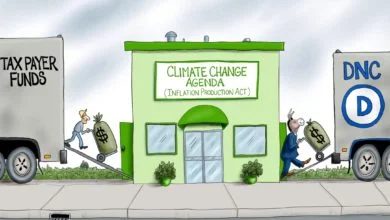The Strange Justifications Behind the Unprecedented Food Stamp Expansion—Which Will Raise the Cap to $836 Per Month
Last week, I sat in the foyer of the homeless mission I run and watched a middle-aged homeless man open an envelope and read his mail intently. I asked, “Good news or bad?” He looked up. “Good news,” he replied. “They just upped my food stamps from $200/month to $250.” When I asked him if he was staying at our shelter, he said “No, I like to drink so I can’t get in here.”
That is not good news.
On October first, the largest increase in the history of the USDA’s food stamp program went into effect. I was the lone opposing witness in a recent US Congressional hearing as that issue was discussed.
SNAP keeps well-meaning families in poverty or for others, like the man I met this week, the program inadvertently supports a destructive life of addiction and dependency. One chronically homeless woman who my organization, Watered Gardens, helped through her drug addiction recovery told a local news outlet, “It was easier for me to give up heroin than it was my food stamp card.”
The researchers increased its estimate of daily caloric intake demand from the amount it has used for 15 years by an extra 600 calories.
Jocelyn had been dependent on SNAP most of her adult life and feared leaving the program. Not only do they foster dependency, but food stamps rarely lead to the healthy lives politicians would hope for. The average food stamp recipient increases his food expenditure by only 30 percent of the benefits’ value, and 20 percent of that grocery bill is made up of junk food. SNAP does not yield its intended results. The scheduled expansion was based entirely on supposed changes in the average American, not efficacy of the current program.
The methodology behind this unprecedented SNAP expansion is dubious. Food stamp distribution is determined by the Thrifty Food Plan (TFP), a report that examines food and nutrient need, cost, and consumption for an imaginary family of four for one week. This year’s reevaluation resulted in a 115-page report that ultimately increases SNAP benefits by an average of just over 21 percent, bringing the maximum benefits for a family of four from about $690 per month to $836—and the cost of the program up from $79 billion to $95 billion. There are three strange justifications behind the expansion.
First, the report used food price data collected from spending habits among all families, rather than only poor ones, as had been the norm for past TFPs. This adjustment, though, certainly can’t account for much of the increase: The Bureau of Labor Statistics revealed in 2019 that the average food bill for an American family (restaurants included) was $681. That’s $150+ less than the new “supplemental” benefit families will receive.
Ironically, FDR, who signed the Food Stamp Program into existence, said it best when he foretold that welfare could become “a narcotic, a subtle destroyer of the human spirit.”
Second, the researchers increased its estimate of daily caloric intake demand from the amount it has used for 15 years by an extra 600 calories. The FDA justified this in part with the fact that men are, on average, 8.5 pounds heavier today than they were ten years ago. But it’s also true that American obesity has risen from 30 percent to 42 percent in the same time span. An increase in weight doesn’t mean a person needs to eat more. Researchers also changed their working assumptions about how active children are, from “moderately active” in the last TFP (2006) to “active” in the current one—which is ludicrous. The most recent Report Card on Physical Activity for Children gave the US a D-minus, reporting that 76 percent of children ages 6 to 17 fail to meet the basic standard of necessary physical activity.
Lastly, the report cites the addition of seafood to the recommended American diet. Seafood is one of the most expensive categories in the model, and prices have only risen in recent years. Eating fish is not a necessity. While the rest of American families will adjust to higher prices by buying alternatives, the TFP maintains that the average family must continue consuming their 2.25 pounds of seafood every week and raises its minimum accordingly.
This year’s TFP was clearly designed to balloon Food Stamps. The misguided assumption that increasing public assistance will eradicate poverty was baked into the methodology. However, the human cost of the SNAP expansion is higher than the price tag shows. Almost everyone I meet enrolled in a welfare program struggles with an underlying fear of failing without the help of the state.
Ironically, Franklin D. Roosevelt, who signed the Food Stamp Program into existence, said it best when he foretold that welfare could become “a narcotic, a subtle destroyer of the human spirit.”
Content syndicated from Fee.org (FEE) under Creative Commons license.



